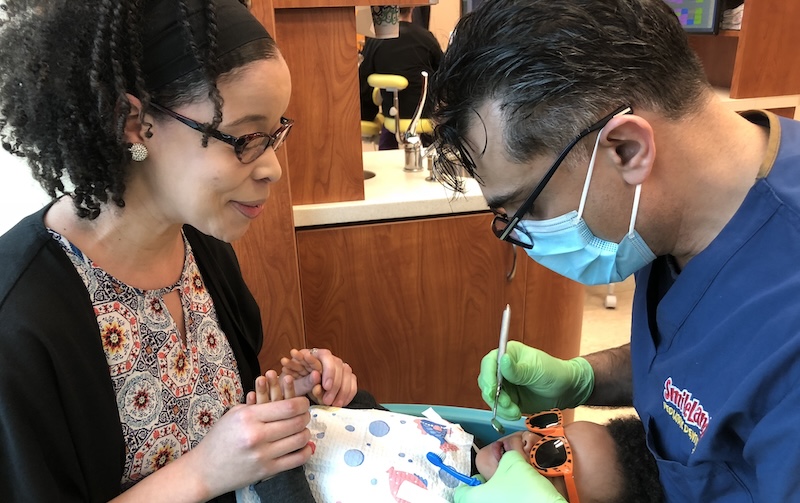 Oral examinations and oral health screenings are procedures for assessing the health of children’s mouths, but they serve different purposes. An oral health screening does not take the place of an oral exam.
Oral examinations and oral health screenings are procedures for assessing the health of children’s mouths, but they serve different purposes. An oral health screening does not take the place of an oral exam.
Knowing which procedure each child receives is important for Head Start programs. The table below describes the differences between an oral exam and an oral health screening.
Check out A Guide to the Dental Periodicity Schedule and Oral Exam for information on the timing of the first oral exam and who can provide an exam.
| Categories | Oral Exam | Oral Health Screening |
|---|---|---|
| Purpose | Provides a complete evaluation of a child’s oral health status. Results in a diagnosis and a treatment plan. | Provides a limited assessment of a child’s oral health status. May result in a referral to a dentist or mid-level oral health professional* for an oral exam. |
| Performed by | Dentist or mid-level oral health professional.* | Mid-level oral health professional,* dental hygienist, or health professional (e.g., physician, nurse practitioner, or physician assistant trained to conduct an oral health screening). |
| Follow-up | If tooth decay or another oral health problem is identified, treatment is provided by a dentist or mid-level oral health professional,* and the child is scheduled for their next dental appointment. If no oral disease is identified, the child is scheduled for their next oral exam in 6–12 months. | If signs of possible tooth decay or other problems are identified, the child is referred to a dentist or mid-level oral health professional* for an oral exam. Case management may be provided if a child does not have an ongoing source of continuous, accessible oral health care. |
*In some states, mid-level oral health professionals (e.g., advanced dental hygiene practitioners, dental therapists, dental health aide therapists) are licensed by the dental board. These professionals are legally allowed to conduct oral assessments and evaluations that qualify as an oral exam under their state's dental practice act.
Read more:
Resource Type: Article
National Centers: Health, Behavioral Health, and Safety
Audience: Teachers and Caregivers
Last Updated: March 27, 2025
